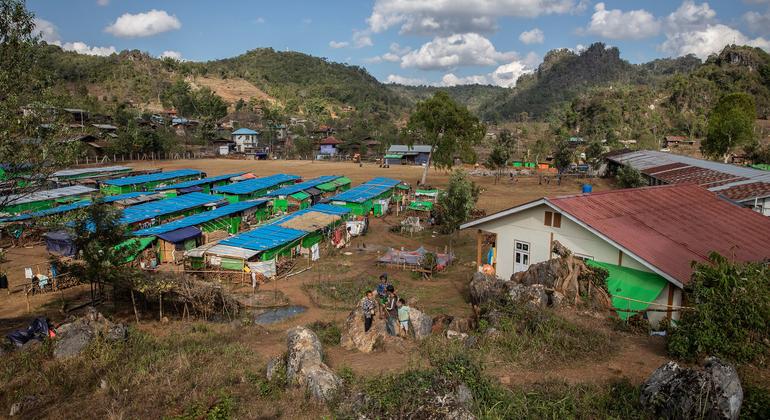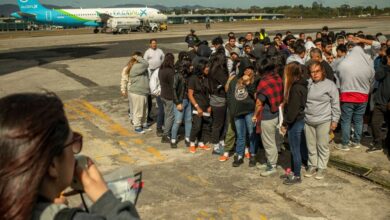UN officials concerned about targeting of civilians amid renewed fighting in Myanmar

Fierce fighting erupted in early July in eastern Myanmar, breaking a ceasefire between the military and an alliance of three ethnic armed groups that had banded together in October to fight the military government.
Reports say ethnic armed groups have captured key towns in the region, while Tatmadaw – as the Myanmar military is known – used heavy weapons, including artillery and air strikes. Hundreds of civilians were killed and tens of thousands more were displaced.
The situation in Myanmar has worsened since The military overthrew the elected government. in February 2021 and jailed its leaders, including President Win Myint, State Counselor Aung San Suu Kyi and many others. More 20,000 political prisoners remain detained across the country.
Devastating damage to civilians
In one Joint StatementAlice Wairimu Nderitu, UN Special Adviser on the Prevention of Genocide, and Mo Bleeker, UN Special Adviser on the Responsibility to Protect, highlighted the impact of the renewed fighting on civilians.
“Since October 2023, people across the country have been suffering the devastating consequences of renewed violence between ethnic armed groups and the Myanmar military,” they said.
They stressed the military’s duty to ensure everyone is protected regardless of religion, ethnicity, origin, gender or political orientation.
“The Myanmar military is primarily responsible for addressing and countering hate speech and preventing incitement to discrimination, hostility or violence against minorities, as well as preventing and protecting the entire civilian population from genocide, war crimes and crimes against humanity,” they stressed.
Attacks on Rohingya
Ms. Nderitu and Ms. Bleeker also voiced deep concern about the situation of the Rohingya Muslim minority in the country’s western Rakhine province, where both the Arakan Army and the military have been accused of serious human rights violations.
These actions include beheadings, burning villages, drone attacks and killing unarmed people fleeing. There are reports that Rohingya as well as civilians from other minority groups are being used as human shield And conscripted into armed forces and armed groups.
“Since 2017, hate speech has also been used again to incite ethnic tensions between the Rohingya and Arakhan communities, with the aim of exacerbating inter-ethnic polarization,” the statement added.
Rakhine is the site of a the military’s brutal crackdown on the Rohingya in 2017resulted in the killing of some 10,000 men, women and infants and the displacement of nearly 750,000 community members, many of whom continue to languish in refugee camps in neighboring Bangladesh.

Myanmar has suffered from numerous disasters caused by extreme weather, such as floods and storms. Image of damage caused by Cyclone Mocha in May 2023.
Humanitarian situation
Humanitarian crisis in Myanmar continues to worsen, estimates 18.6 million people need support and protectionincluding some three million internally displaced people.
Extreme weather, marked by heavy rains and destructive storms, is adding to the misery, destroying homes, crops and livelihoods. Women, children and the elderly are among the worst affected.
Efforts to provide aid are hampered by ongoing fighting and attacks targeting aid workers and property.
Last month, the United Nations World Food Programme (World food program) warehouses in Maungdaw in northern Rakhine province were looted and burned, destroying enough food to feed 64,000 people for a month.
Resources for aid programs also remain a major challenge as the 2024 Humanitarian Needs and Response Plan is severely underfunded, receiving only 12 percent of its $994 million appeal.


